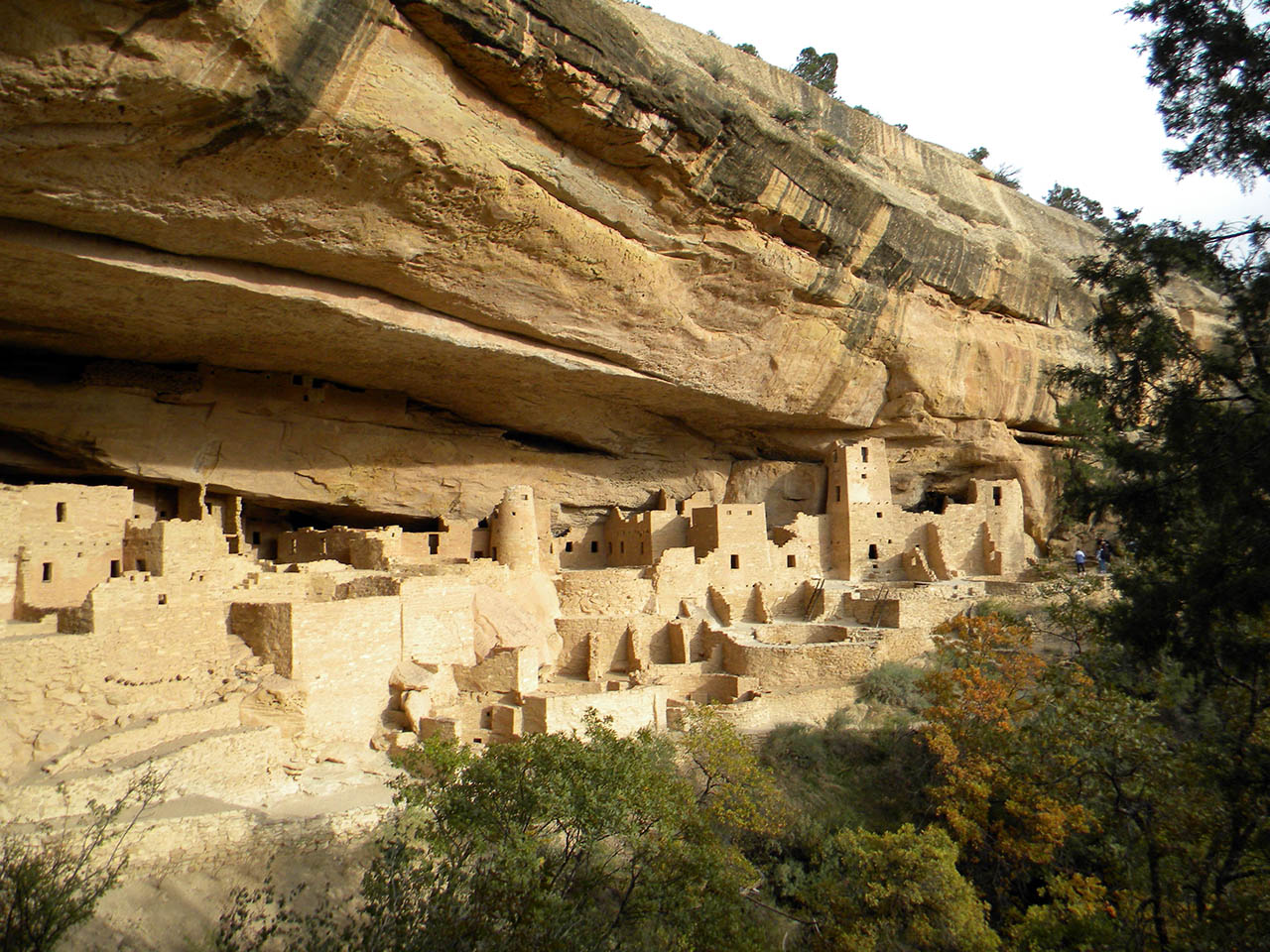The Local newsletter is your free, daily guide to life in Colorado. For locals, by locals.
Mesa Verde’s cliff dwellings offer a spectacular glimpse of Colorado’s ancient human history from a thousand years ago. But what most visitors don’t realize is that the overhanging cliffs, which sheltered Colorado’s very first neighborhoods, have a much longer story to tell—one that dates to 78 million years, to a time when Colorado lay deep beneath the sea.
Mesa Verde rises above the surrounding countryside because the resistant Cliff House Sandstone (a rock layer named in honor of the cliff dwellings) veneers its relatively flat top. This same hard sandstone layer once extended across the entire landscape, but over millions of years the local rivers gradually removed it from the surrounding area, exposing a very thick and very soft layer of shale beneath. Once the shale was out in the open, the creeks cut through it like a hot knife through butter, excavating the low valleys that today surround Mesa Verde’s higher, and hence greener, tableland.

This sandstone was deposited along the shore of an ancient sea that covered much of Colorado 78 million years ago, and the shale was once a pile of gooey mud that covered the adjacent seafloor. Both were buried beneath additional sediments, which compressed them into stone. Erosion in the geologically recent past re-exposed the layers, providing the raw ingredients Mother Nature would need to create the world-renowned alcoves.
As you tour Mesa Verde’s amazing ruins, you’ll see ample evidence of the stone’s beachfront origin. On the south end of Balcony House’s floor, look for curvy ripple marks left behind by the waves that lapped onto the ancient beach. In Cliff Palace, stone steps and blocks of sandstone used to construct the dwellings have ripples and even a few fossils of the creatures that inhabited that vanished sea. During your tour, ask the ranger to point out the petrified clams, shark teeth, and ammonites (extinct relatives of today’s chambered nautilus), which can be tricky to spot on your own.
The Ancient Puebloans (Anasazi) built their villages inside the giant sandstone alcoves to protect themselves from intruders and the elements, and also to live next to the series of springs that served as vital sources of water. It’s these springs that are responsible for forming the giant alcoves. Through the millennia, as rain has fallen on the mesa top, it has percolated down through the sandstone, which like a sponge easily allows water to pass through it. The shale, however, is more akin to a shingled roof; once the water hits it, the liquid can’t get through.
Instead, the water flows along the boundary between the two rock types until it hits the end of the line and emerges from the canyon wall as a spring. Where the water emerges, it plucks individual sand grains from the rock face, slowly hollowing out a small alcove. As each recess grows, blocks of unsupported rock begin to fall from the ceiling, expanding the alcove much more rapidly. In this manner, Mother Nature painstakingly carved out alcoves big enough for humans to inhabit, establishing the setting for the spectacular architectural achievement that is Mesa Verde.








